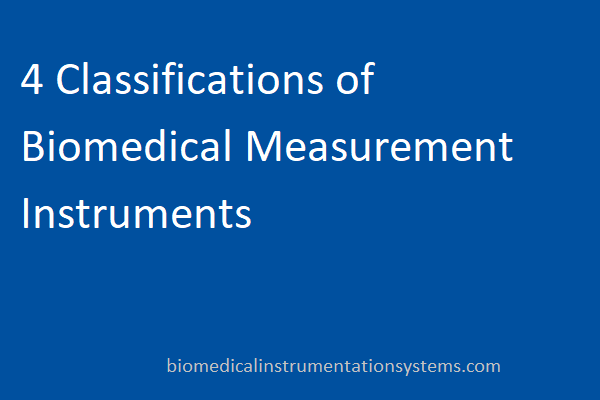Instruments that are used in biomedical measurements can be grouped into four categories, based on the following:
- Quantity that is sensed
- Principle of transduction
- Organ system
- Clinical medicine specialities

Classification Based on Quantity that is sensed
The techniques employed in biomedical measurement can be grouped as per the quantity that is sensed, such as pressure, flow or temperature. This categorization makes it easier to compare the different methods for measuring any quantity.
Categorization Based on the Principle of Transduction
Classification can be done based on the principle of transduction such as inductive, resistive, capacitive, ultrasonic or electrochemical. You can delve deeper into the different applications of each principle, enhancing your understanding of each concept.
Related: Types of Transducers used in Biomedical Measurement Applications
Classification Depending on each Organ System
Biomedical measurement techniques can be studied separately for each organ system, for example, the cardiovascular, nervous, pulmonary, and endocrine systems. This methodology isolates all key measurements for specialists who need to know only about a specific area, but it results in considerable overlap of quantities sensed and principles of transduction.
Classification According to the Clinical Medicine Specialities
Biomedical instruments can be classified based on the clinical medicine specialities, such as cardiology, paediatrics, radiology or obstetrics. This approach is effective for medical personnel who are interested in specialized instruments.
Find out more about: Fingertip Pulse Oximeter Blood Oxygen Saturation Monitor
Also read: Key Considerations for Biopotential Measurements

Leave a Reply
You must be logged in to post a comment.